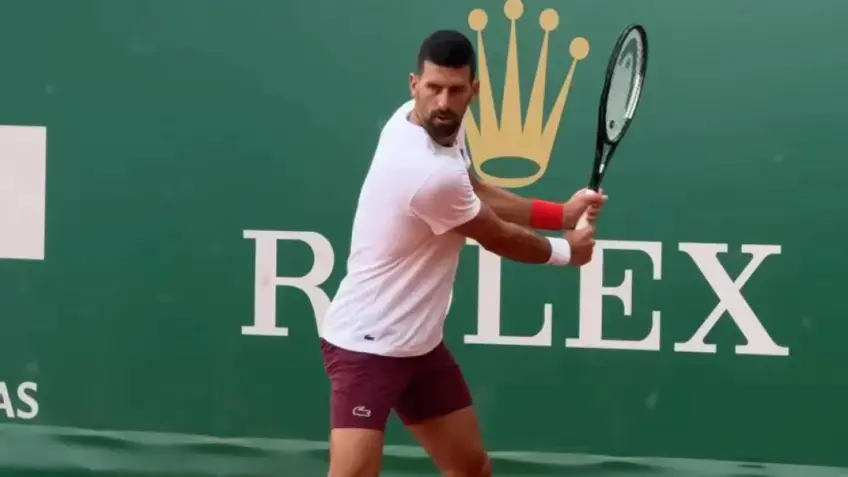
Under the azure skies of Monte Carlo, where the clay courts of the Rolex Monte Carlo Masters gleam with prestige, Novak Djokovic’s unexpected second-round exit to Alejandro Tabilo sent shockwaves through the tennis world. The world No. 5, a 24-time Grand Slam champion, fell 6-3, 6-4 in a performance he himself branded “horrible,” leaving fans and analysts searching for answers. As whispers of disappointment echoed around the Monte Carlo Country Club, tournament director David Massey stepped forward to address the Serbian’s stumble, offering a measured perspective on a defeat that has sparked debate about Djokovic’s form and the relentless evolution of the sport.
Djokovic, at 37, arrived in Monaco chasing his 100th ATP title, a milestone that would place him alongside legends Jimmy Connors and Roger Federer. Fresh off a Miami Open final, where he lost to 19-year-old Jakub Mensik, he carried cautious optimism despite battling a viral infection and an eye issue. “I did not have high expectations,” he admitted, acknowledging the challenge of transitioning to clay after his Olympic gold triumph in Paris last summer. Yet, against Tabilo, a left-handed Chilean ranked No. 32, Djokovic faltered, racking up 29 unforced errors and struggling to find rhythm. “I expected myself at least to have put in a decent performance. Not like this,” he said, his frustration palpable as he apologized to fans for what he called a “horrible feeling to play this way.”
Massey, reflecting on the upset, framed Djokovic’s performance within the broader context of tennis’s changing tides. “We are seeing these cycles where the elder generation will become less present over time,” he observed, nodding to the emergence of players like Carlos Alcaraz and Jannik Sinner, who have claimed six of the last seven majors. Yet, he was quick to affirm Djokovic’s enduring prowess. “He didn’t play his best tennis here, and we know he was frustrated by his level of play, but he’s still playing incredible tennis,” Massey said, pointing to Djokovic’s Miami run as evidence of his ability to challenge the elite. “He can still beat the best players in the world,” he added, a reminder that one off-day doesn’t erase a legacy built on unmatched resilience.
The defeat to Tabilo, who also bested Djokovic in Rome last year, marked a rare blemish—a 0-2 head-to-head record that places the Chilean among an elite group, including Rafael Nadal and Nick Kyrgios, who’ve started 2-0 against the Serb. Tabilo’s triumph was no fluke; his 81 percent first-serve point win rate outshone Djokovic’s 67 percent, and his aggressive play kept the veteran on his heels. “I just tried to remember what I did well last time,” Tabilo said, crediting his serve for steadying his nerves in a season where he’d won just two matches before Monte Carlo.
For Djokovic, Monte Carlo has long been a tricky puzzle. Despite titles in 2013 and 2015, he’s reached the quarterfinals only three times since, with early exits to players like Jiri Vesely and Dan Evans dotting his record. “The first tournament on clay is always tough for some players to adjust to,” one observer noted, suggesting Djokovic’s struggles may be a hiccup rather than a decline. Massey echoed this, emphasizing the sport’s physical demands. “Tennis has become so professional—players are extending their careers into their late thirties,” he said, marveling at Djokovic’s longevity while acknowledging the toll of injuries, like the hamstring tear that derailed his Australian Open.
As Djokovic shifts focus to Madrid and Roland Garros, where he’s a three-time champion, his resolve remains unshaken. “Roland Garros,” he declared when asked about his clay-season goals, signaling a singular focus on the French Open. Massey’s words offer perspective: a poor day in Monte Carlo doesn’t dim a star who’s still “a reference point” for the sport. For fans, it’s a reminder that even warriors stumble—but Djokovic’s fight is far from over.
Leave a Reply